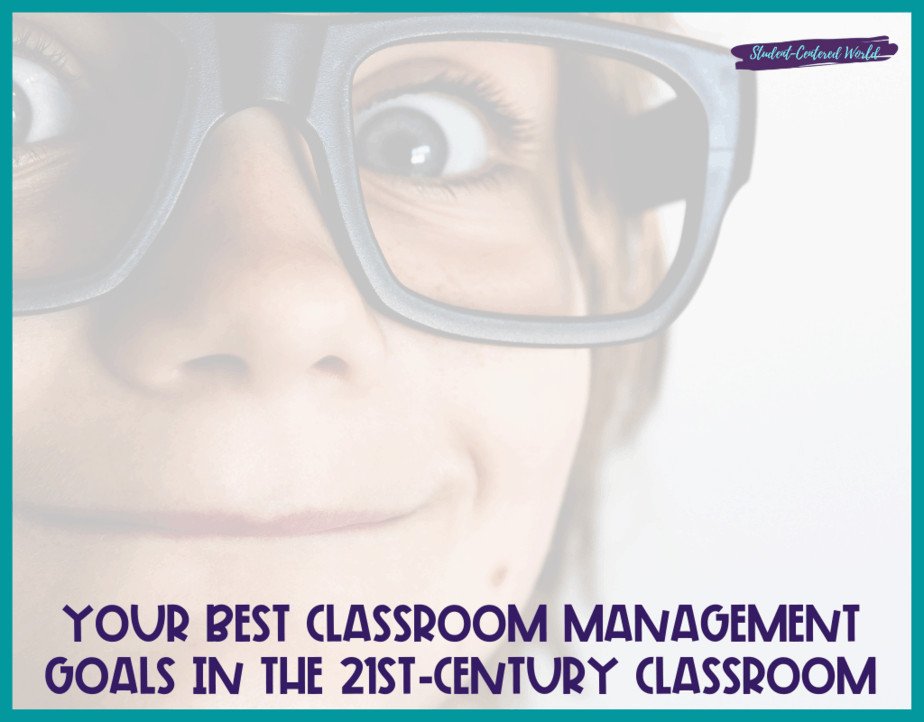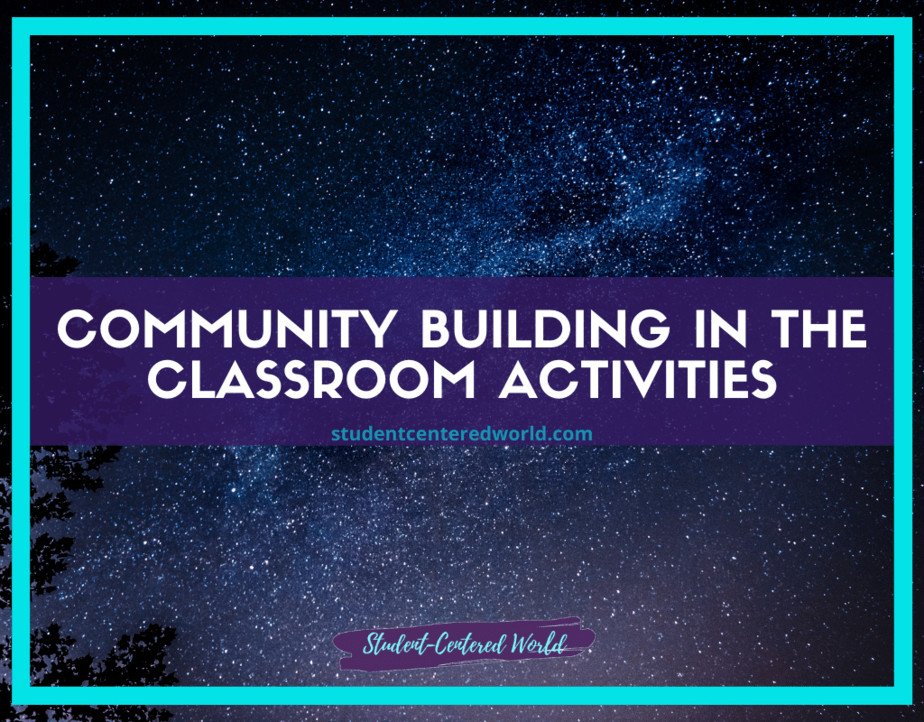Your Best Classroom Management Goals in the 21st-Century Classroom
All teachers have an idea of what their classroom management goals are. We all have the notion of our picture-perfect classroom, but how can we get there? CAN we even get there? Though no classroom will ever be perfect, you can reach your classroom management goals with a plan in place and the understanding that sometimes, that plan might need to be amended (and that’s okay!).
When looking at classroom management goals, it is important to think about what you are trying to accomplish in your class. Are your goals for the year based on a particular unit of study? Do you have individual student behavior problems that need to be addressed? Or is it more general, like establishing positive classroom norms or increasing engagement?
Classroom management needs to be tailored according to the needs of each individual classroom and the teacher within it. For example, an early childhood teacher would likely have different classroom management goals than a high school history teacher. An experienced, well-seasoned middle school math teacher with a group of students who are used to his style and norms may need fewer classroom management strategies in place than a brand new 6th grade ELA instructor whose students are testing the waters.
It is also necessary to tailor those classroom management goals to the students that are in your classroom at that time. What might work for one class may not resonate with the students in another. If you want your classroom management routine to stick and be effective, take the time to determine what will get buy-in from the students. Once you have them hooked, you can always tweak them from there.
Classroom Management Tips
That being said, there are some basic classroom management tips that would be helpful for any teacher to implement in their teaching practice. Keep these things in mind when developing your plans and consider what you would like your class to look like by the end of each year/semester/unit.
– Show students respect.
– Know your students. Do your homework on their prior knowledge, skills, and interests to make the subject matter relevant to them.
– Set clear class rules/boundaries upfront.
– Establish routines for how you will work together in your classroom.
– Use positive reinforcement to encourage appropriate behavior. Don’t wait for a student to do something wrong before giving them a compliment or positive feedback.
– Don’t allow students to argue during lessons. If they feel the need to argue, offer them the privilege of doing so after class.
– Always give warning before taking away privileges such as recess/break time. The more you show students what they will gain, the more likely they will do what you ask.
– Stay calm and assertive when faced with misbehavior. This is one place where yelling doesn’t help, so try to control your tone of voice. It can be difficult, but if you remain calm you are better able to think about solutions instead of getting caught up in the heat of the moment.

– Use consequences that are age-appropriate. For example, holding a lost library book for an elementary student is one thing, but accepting payment plans from a high school student who owes over $100 for returning the book late isn’t practical.
– Reward good behavior through small privileges such as allowing students to call out answers in class. If you notice one student helping another, acknowledge it and praise them both.
– Catch students doing things right!
– Be consistent so that your students know what to expect when they enter all of your classrooms. Creating positive classroom management routines will get you started in the right direction.
Things to remember
Remember that there is no perfect classroom that will meet all set classroom management goals! Sometimes students are going to be off task, misbehave, or fail to see the importance of what you are teaching. It happens! Just handle it as best you can and then move on. Don’t let their actions derail your plans for that day/lesson.
Again, remember each class is different! What works for one group may not work with another. Adjust your lesson plans and classroom management strategies accordingly.
Not all students are going to buy into what you are doing in the class every single day! That’s okay. Just do your best to help them see how staying on track will benefit them in the long run, even if they don’t realize it right away.
Try not to take misbehavior personally (easier said than done, I know). Some students are simply at different points in their learning cycles and that’s okay. Just try your best to show them how they can be part of the process!

Classroom management routine
Establishing an effective classroom management routine will help keep your students on track with what you are working on in the class and help you meet those classroom management goals. It will also let them know what to expect so they can stay focused and prepared for class, which is especially helpful if you have new or returning students who are adjusting to being back at school.
Remember, classroom management doesn’t happen overnight! You will need to slowly establish routines and procedures that work best for you, your students, and your room. You can set up a classroom management routine skeleton to get started on what tasks/activities are most important in your classroom.
When establishing your routine of expectations for behavior, it’s okay if not all the items on the list are applicable to every day or lesson. You can add or remove items as your class and the lessons change. Just be sure you’re including items that will benefit your students in both their school and personal lives.
Be sure to let your students know what behaviors come along with each expectation! If they know just what to expect, then they are less likely to engage in distracting behaviors during class time.
Try to have a daily routine as well as a lesson-specific routine for each day so that everyone knows what’s going on and how they should be spending their time in the classroom. It will help them focus more on your class and learning rather than worrying about when class is going to be over or getting distracted by other students. This should be key in setting your classroom management goals.
For example, you could have a daily routine list on the whiteboard or wall that includes coming to class prepared with homework and materials, having their supplies ready for the day’s activities, being respectful of each other and helping classmates when needed, listening when others are speaking, staying on task with the lesson at hand, etc.
When creating your lesson-specific routine, you can refer back to the daily routine list to see which tasks/activities match up best with your classroom management goals. For example, if one of your goals is for everyone to stay on task during the lesson, then it would be wise to include that as part of the lesson-specific routine.
Classroom management routines should be reviewed and adjusted as needed, whether it’s on a daily or weekly basis. You will want to revisit them when planning your class lessons to make sure they will help achieve your set classroom management goals and you can revise them if necessary.

Tips for staying positive
Dealing with misbehavior and staying positive is easier said than done, but it is possible to do both and meet those classroom management goals with a little practice and effort on your part. Here are some helpful tips:
Praise good behavior (and redirect inappropriate behavior)! When students demonstrate positive behaviors – such as following directions, being kind to others, working hard even when they don’t want to, and staying focused and on-task – make sure you let them know how much you appreciate it. They will be more likely to continue those behaviors if they know their efforts have been noticed.
Be firm, yet calm when addressing misbehavior. When students are being disruptive or disrespectful, reminding them of the classroom management routine as well as their specific behavior expectations will help to set them back on track. Try taking a moment to catch your breath if you are the one causing the disruption in an effort not to escalate the situation.
Play music when students are doing what’s expected of them! Studies have shown that playing upbeat, positive music in the classroom can lead to improvements in student behavior.
Give students options! Give students choices within your classroom management rules to give them a sense of responsibility and control over their behavior. For example, if you want everyone to sit quietly at their desks during independent work or center time, instead of saying they have to stay seated, tell them they have 2 choices – either sit on the floor or sit at their desk – and they need to make the choice on their own.
Be honest and communicate with parents or guardians when behavior is a problem! When students are repeatedly demonstrating inappropriate behaviors, it might be necessary to reach out for help from home so that you can all work together and find a solution. It’s important that everyone is on the same page.
Share wins! When students catch on to your classroom management routine and are successful at maintaining positive behavior, helping to meet those classroom management goals, it’s important to acknowledge those efforts as well. If you have a class website or blog where parents can check in on their student’s progress throughout the year, share some stories about good behavior they might not otherwise know about! This will set the tone that everyone is working together towards a common goal.
When it comes to classroom management goals, no one has figured out a one-size-fits-all solution. The strategies outlined in your plan will likely take some tweaking and adjusting throughout the year to meet your unique students’ needs and ensure you can achieve those classroom management goals for better student behavior.
Stop Driving the Teacher Struggle Bus
Are you struggling with student engagement, apathy, or keeping your class on track?
💫💫 There’s hope! 💫💫
Join my free teacher workshop “Choosing Choice” and in just 60 minutes, you’ll craft a practical plan to revitalize your teaching. Discover the magic of student choice in boosting engagement, gain quick implementation ideas, and explore strategies for year-long success.
Unlike overwhelming workshops, my approach guides you in real-time, providing more classroom options, reducing stress, and giving you more personal time.
Plus, you’ll earn a 1-hour professional development certificate and have 7 days of access.
Don’t miss this chance to transform your teaching; click below to secure your spot now!






